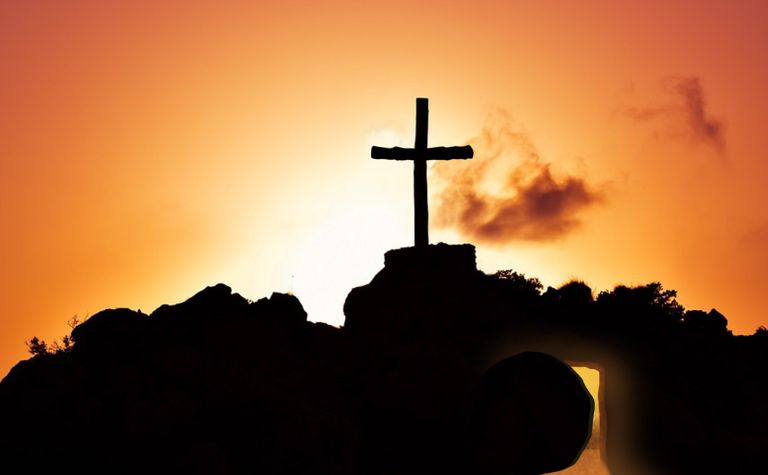God loves color. He created a universe full of them. The colors that the Bible mentions the most are blue, red (including scarlet), purple, black, and white. Scripture rarely refers to green, yellow, orange, or gray. Sometimes Bible writers use colors literally; at other times, they use them symbolically. One question people often ask about is Jesus’ favorite color.
The Bible doesn’t mention Jesus’ favorite color, but white is most associated with him. The Gospels and the book of Revelation mention Jesus and the color white several times. Multiple things closely associated with Jesus are also depicted as white.
What is the symbolic meaning of white in the Bible? What parts of Jesus do the Gospels and Revelation depict as white? What are things associated with Jesus described as white? What animal is? What army is? What people are? Keep reading to learn the answers to these questions and others.
Also, see Why Did Jesus Descend Into Hell? to learn more.

Jesus Appears With White Clothes and Hair
White is associated with Jesus in Matthew and Revelation. The first description is of his clothes. The second is of his hair. While the depictions say that Jesus’ clothes and hair literally shone white, the color also had a symbolic meaning.
One Bible scholar explains, “At times a writer may use color in a symbolic sense to convey theological truth about the subject of his writing… for instance, white may be symbolic of purity or joy.” In apocalyptic literature, like Revelation, “one may find white representative of conquest or victory.” [1]
Jesus’ clothes are white
In the story of Jesus’ transfiguration, Matthew writes, “And [Jesus] was transfigured before them, and his face shone like the sun, and his clothes became white as light” (Matt. 17:2, ESV).
Since light often manifests as white in color, Jesus’ clothes being “white as light” is consistent. It also makes verses like 1 John 1:5 a supporting description: “This is the message we have heard from him and proclaim to you, that God is light, and in him is no darkness at all” (ESV, emphasis added).
Many scholars believe the white imagery is from the book of Exodus: “When Moses came down from Mount Sinai, with the two tablets of the testimony in his hand as he came down from the mountain, Moses did not know that the skin of his face shone because he had been talking with God” (Exod. 34:29).
New Testament scholar D.A. Carson writes, “Moses’ face shone because it reflected something of God’s glory. But as for Jesus, he himself was transfigured… As they would come to realize, they were being privileged to glimpse something of his preincarnate glory (Jn. 1:14; 17:5; Phil. 2:6-7), and anticipate his coming exaltation (2 Pet. 1:16; Rev. 1:16).” [2]
Jesus’ hair is white
In the first chapter of Revelation, John sees an image of Jesus. He writes, “The hairs of his head were white, like white wool, like snow. His eyes were like a flame of fire” (Rev. 1:14, ESV). Jesus’ white hair didn’t signify old age but a greater and deeper truth.
Many scholars believe the white imagery comes from the book of Daniel: “As I looked, thrones were placed, and the Ancient of Days took his seat; his clothing was white as snow, and the hair of his head like pure wool; his throne was fiery flames; its wheels were burning fire” (Dan. 7:9).
Revelation commentator Grant Osborne explains, “In ancient culture white hair indicated both dignity and the accumulated wisdom of years of experience… Christ in this simile is pictured in his eternal wisdom and in the respect due his person (cf. Lev. 19:32; Prov. 20:29). [3]
Also, see How Many People Did Jesus Feed? to learn more.

Things Associated With Jesus Are White
Animals, angels, and people that are associated with Jesus in the New Testament, especially in Revelation, are sometimes depicted in white. The imagery suggests holiness, purity, and Christ-likeness.
People who walk with Jesus wear white
John writes, “Yet you have still a few names in Sardis, people who have not soiled their garments, and they will walk with me in white, for they are worthy” (Rev. 3:4, ESV). In this verse, soiled or non-white garments depict sinfulness. Conversely, clean or white garments suggest purity.
Jesus’ horse is white
John writes, “Then I saw heaven opened, and behold, a white horse! The one sitting on it is called Faithful and True, and in righteousness he judges and makes war” (Rev. 19:11, ESV). The whiteness of the horse doesn’t imply that the animal is necessarily pure but that its rider, Jesus, is.
Martyrs for Jesus wear white
John writes, “Then they were each given a white robe and told to rest a little longer, until the number of their fellow servants and their brothers should be complete, who were to be killed as they themselves had been” (Rev. 6:11, ESV). White robes imply victory, holiness, and purity.
Also, see How Old Was Mary When Jesus Died? to learn more.

People in heaven wear white
John writes, “After this I looked, and behold, a great multitude that no one could number, from every nation, from all tribes and peoples and languages, standing before the throne and before the Lamb, clothed in white robes, with palm branches in their hands” (Rev. 7:9). This diverse group of believers are victorious and holy.
The armies of heaven wear white
John writes, “And the armies of heaven, arrayed in fine linen, white and pure, were following him on white horses” (Rev. 19:14, ESV). Because they belong to Christ, these angels and their horses are depicted in white.
Jesus’ throne is white
John writes, “Then I saw a great white throne and him who was seated on it. From his presence earth and sky fled away, and no place was found for them” (Rev. 20:11). The whiteness of the throne reflects the victory and purity of Christ.
Also, see Where Was Joesph When Jesus Died? to learn more.
References:
[1] Holman Illustrated Bible Dictionary. p. 316.
[2] Matthew by D.A. Carson. EBCR. p. 437.
[3] Revelation by Grant Osborne. BECNT. p. 90.
Related Questions
A lot of people know that Jesus of Nazareth lived a long time ago. They may even know that he was a Jewish man born at the time of the Roman Empire. Yet, they are unclear about exactly when he was on...
Regular Bible reading is a valuable habit, as Scripture is God's message to people. However, the Bible's 66 distinct books, featuring various authors, settings, and themes, can make it challenging...
